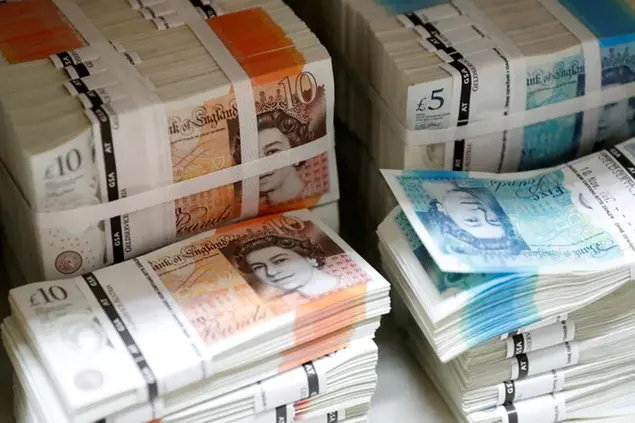PHOTO
The pound steadied on Friday after suffering sharp losses a day earlier when the Bank of England (BoE) cut interest rates for the first time in more than four years.
Sterling was nearly flat at $1.2739, after having hit a fresh one-month low at $1.2708 earlier in the session, and was on track to post its biggest weekly decline in nearly four months, down 1%.
The BoE cut rates on Thursday by a quarter-point to 5% in a tight vote by its policymakers, underscoring the extent to which inflation risks are still hanging over the economy.
Governor Andrew Bailey stressed the central bank was not committing to a series of quick rate cuts, saying the stronger performance of the economy in recent months could keep inflation risks on the radar.
However, the pound continued to weaken against the euro , touching an eight-week low of 84.995 pence at one point on Friday. Euro/sterling was last up 0.27% at 84.915 pence.
"Looking ahead, we see scope for the UK policy rate to be cut more than that in the euro zone and look for euro/sterling to turn slowly higher," ING analysts said. "We have been too bullish on euro/sterling this year, but still favour levels above 85 later this year."
Investors are fully pricing one further cut to interest rates by the BoE later this year.
Meanwhile, the dollar eased against other major currencies ahead of U.S. payrolls data that is expected to show U.S. employment increased at a slower, but still healthy, pace in July.
A wave of selling hit stock markets on Thursday and Friday, while safe-haven currencies and bonds rose after data showing a surprise slump in U.S. manufacturing ignited worries about a downturn.
Fed Chair Jerome Powell said earlier this week that a U.S. rate cut could come at next month's policy meeting, but after the dour factory reading, traders are pricing in a higher chance of a bigger 50 basis point rate cut next month.
(Reporting by Sruthi Shankar in Bengaluru; Editing by Amanda Cooper and Mark Potter)
